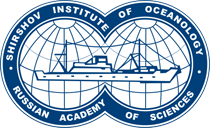 Senior Researcher
Senior Researcher
PhD (Geographical Sciences)
Laboratory of Land-Ocean Interactions and the Anthropogenic Impact
Ocean Physics
36, Nakhimovskii prospect, Moscow, 117997, Russia
Phone:+7(499)124-86-10
Web of Science ResearcherID: E-6914-2014
Scopus AuthorID: 55941565100
ORCID: 0000-0001-6156-6460
Google Scholar: Alexander Izhitskiy
Researchgate: Alexander Izhitskiy
Education
- M.Sc. in physical oceanography: 2006–2011, Lomonosov Moscow State University, Department of Oceanology, Faculty of Geography, Moscow, Russia.
- Ph.D. in physical oceanography: 2011–2014, Shirshov Institute of Oceanology, Russian Academy of Sciences, Moscow, Russia.
Ph.D. thesis: “Thermohaline structure and water circulation of the Large Aral Sea in the beginning of century 21th”, doctoral supervisor Prof. Peter Zavialov.
Professional Experience
Shirshov Institute of Oceanology, Russian Academy of Sciences
Laboratory of land-ocean interactions and the anthropogenic impact
2017 – present: Senior Researcher
2014 – 2017: Researcher
2011 – 2014: Research Engineer
2009 – 2011: Laborant
Scientific internships
2012: CLIMSEAS project (EU FP7 framework), University of Girona, Spain (coordinator Dra. Elena Roget).
2018: DAAD research fellowship in Leibniz-Institute of Freshwater Ecology and Inland Fisheries (IGB), Berlin, Germany (academic host Dr. Georgiy Kirillin).
Research interests and experience
Izhitskiy is an oceanographer with a background in geography. At the beginning of his scientific activity he was focused on the oceanographic conditions of the Aral Sea, one of the largest arid salt lakes in Central Asia, as the subject of my dissertation work. As a result, the interannual variability of thermohaline structure and stratification in the Aral Sea as well as the effect of wind forcing on the water circulation were studied. Further, he was interested in the on-going transformation of physical conditions and vertical mixing regime in the residual basins of the Aral Sea under the influence of desiccation and changes in water balance conditions. The characteristics of vertical mixing regimes in the Aral Sea residual basins were quantitatively estimated and described for the first time since their separation from each other. In particular, a meromictic heliothermal regime was detected and investigated in the former Chernyshev Bay. It was shown that during the desiccation of the Aral Sea, this bay became the largest heliothermal lake in the world. Having participated in annual expeditions to the Aral Sea since 2009 up to the present time, he continues studying the lake state and its evolution as a coordinator of several related projects.
Secondary part of his research is connected with the study of physical processes in coastal zone and ocean surface layer. I am involved in the projects dedicated to investigation of the interaction of the continental runoff with sea waters on the Black Sea shelf, the influence of physical processes on the biogeochemical cycle in coastal waters. During the oceanic scientific surveys in Polar Regions he investigated the impact of sea ice melting on the oceanographic and biological conditions in the Weddell Sea and the effect of river inflow on the ecosystem of the Arctic Seas. His research activity is mainly based on the data of field observations. He has participated in more than 30 coastal and off-shore scientific surveys in different regions, including the Southern Ocean (the Weddell Sea and Bransfield Strait), the Black, Kara, Baltic, Caspian, South-Chinese and Aral Seas, Lake Issyk-Kul, lakes of Finland and Germany.
Key Publications
- Izhitskiy A.S., Kirillin G.B., Goncharenko I.V., Kurbaniyazov A.K., Zavialov P.O. The world's largest heliothermal lake newly formed in the Aral Sea basin // Environmental Research Letters. 2021. Vol. 16. Number 11. 115009. doi:10.1088/1748-9326/ac2d66
- Ayzel G.V., Izhitskiy A.S. Climate Change Impact Assessment on Freshwater Inflow into the Small Aral Sea // Water. 2019. Vol. 11. P. 2377. DOI: 10.3390/w11112377
- Izhitskaya, E., Egorov, A., Zavialov, P., Yakushev, E., & Izhitskiy, A. (2019). Dissolved methane in the residual basins of the Aral Sea. Environmental Research Letters. V. 14, 065005. https://doi.org/10.1088/1748-9326/ab0391
- Zavialov, P. O., Izhitskiy, A. S., Kirillin, G. B., Khan, V. M., Konovalov, B. V., Makkaveev, P. N., ... & Zhumaliev, K. M. (2018). New profiling and mooring records help to assess variability of Lake Issyk-Kul and reveal unknown features of its thermohaline structure. Hydrology and Earth System Sciences, 22(12), 6279-6295. https://doi.org/10.5194/hess-22-6279-2018
- Izhitskiy, A. S., & Zavialov, P. O. (2017). Hydrophysical state of the Gulf of Feodosia in May 2015. Oceanology, 57(4), 485-491. https://link.springer.com/article/10.1134/S0001437017040105
- Osadchiev A.A., Izhitskiy A.S., Zavialov P.O., Kremenetskiy V.V., Polukhin A.A., Pelevin V.V., Toktamysova Z.M. Structure of the buoyant plume formed by Ob and Yenisei river discharge in the southern part of the Kara Sea during summer and autumn // Journal of Geophysical Research: Oceans. –2017. – 122, doi:10.1002/2016JC012603
- Izhitskiy, A. S., Zavialov, P.O., Sapozhnikov, P.V., Kirillin, G.B., Grossart, H.P., Kalinina, O.Y., Zalota, A.K., Goncharenko, I.V., Kurbaniyazov, A.K. Present state of the Aral Sea: diverging physical and biological characteristics of the residual basins. Scientific Reports, 6, 23906; doi: 10.1038/srep23906 (2016), https://www.nature.com/articles/srep23906
- Izhitskiy A. S., Zavialov P. O., Roget E., Huang H. P., Kurbaniyazov A. K. On thermohaline structure and circulation of the Western Large Aral Sea from 2009 to 2011: Observations and modeling //Journal of Marine Systems. 2014. V. 9. P. 234-247 https://doi.org/10.1016/j.jmarsys.2013.06.013



